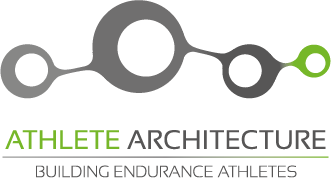“If you fail to prepare, prepare to fail.”
-Prefontaine
In the early days of triathlon athletes did not have references or resources for information on endurance training theory. The triathlon coach did not exist and research about triathletes was non-existent. We all trained a bit haphazardly, using what little information was provided by triathlon magazines, or by the only book on triathlon training at the time, Dave Scott’s Triathlon Training (1986). I can speak from experience that all of us triathletes here in Austin during the late 80’s trained together and were very competitive during training sessions. These group sessions were great for building up the fringe triathlete community that we were becoming, but they were terrible for developing the ability to perform well and predictably during races. We just didn’t know any better and had no examples to draw from. I failed many times. I was much faster and competed much better in the classic Tuesday night training rides than I did in my priority ‘A’ races. Why was this? After all, the goal of training is to compete optimally on race day. But, here I was ‘competing’ well on Tuesday nights, but racing poorly on Saturdays. I was in great shape but was in poor form for racing. Sure, there was the occasional race that I raced well, but I was frustrated that I could not plan or predict when that race would occur. It was clear that I needed better preparation.
Let’s jump ahead three decades. The information availability paradigm is now reversed. Today, information flies around instantaneously and continually. Need the latest foolproof swim interval session? Click. Click. Just downloaded it for free, which is about what it’s worth. It’s just another athletes training regime with no consideration of your unique physiology or ability. Need the newest gizmo to shave a few seconds of your 40K bike split? Click. Click. Two days later it’s at your doorstep. I see athletes all the time that are overwhelmed by gadgetry and pop star training techniques. Its understandable, we all want to be more fit, race faster and show up on race day in good form. But we need to take a step back. Form occurs with a balanced training program of stress, fatigue, and recovery. All the gadgets in the world are nowhere near as effective as a well thought out training plan. Equipment does help us get faster, but a $10K bike that is ridden haphazardly is no match for an entry-level race bike that is ridden with consistency and purpose. Jack White, in “This Might Get Loud”, can piece together a guitar out of scraps and play music. Hand me a $10K Les Paul guitar and I am no better equipped to produce music than if you handed me a kazoo. The point being your overall skill set will trump equipment every time. To race well and predictably every athlete needs proper, well thought out, and objective training. These concepts apply to all endurance athletes, from the first time participant to the seasoned professional. After all, everyone wants to have a fun and successful race.
There are so many factors and variables that are involved in endurance training and racing. This includes session frequency, intensity, and duration. Short and long term recovery, daily nutrition, race day nutrition and long term planning and goal setting. Designing a training plan that has built in adaptability to adjust to fitness improvements and lifestyle changes is crucial. Navigating through these parameters is daunting for all athletes regardless of experience level. Having the objective viewpoint of a coach is a huge advantage for improving the athlete’s race day performance and success. This, in turn, will surely amp up the fun quotient of training and racing.
This is what I set out to do founding Athlete Architecture. I use my three decades of training and racing, along with mountains of macro data, to design custom training plans and provide personal coaching for each individual athlete. These plans have the sole objective of optimizing athlete performance, reducing injury potential, and increasing race day performance predictability. This is accomplished through focused training sessions, frequent benchmark testing, and athlete feedback. Endurance sports are an individual experience, and the preparation needs to focus on the individual athlete. I am not a huge proponent of group training. Group training often leads to over training and all out efforts on every work out. This level of constant competition has a high rate of burn out and injury. There is, however, a time for group training with the following caveat: it must integrate with the athletes training plan and objectives. Each training session should have a particular objective and purpose. Skill work, aerobic conditioning, force production and race day scenario simulation to name a few. When the athlete enters into a training program with a clear purpose, the daily training becomes fun and exciting. And listen, all athletes want to have fun and enjoyment in their daily quest for fitness and performance. I have put these theories to test in my own training and with other athletes resulting in substantial personal bests in marathons and triathlons. I am confident that any athlete can improve no matter what fitness level they currently have. Improvement is a triad consisting of dedication, coaching direction, and a good training plan. There are no secrets here. No fancy snake oils. No outrageous claims. Just solid, race proven ideas about endurance training and racing. Need more out of your athletic badass? Stay tuned and follow us at all the normal channels…
twitter/athletearch
and Facebook.
Chris Toriggino
